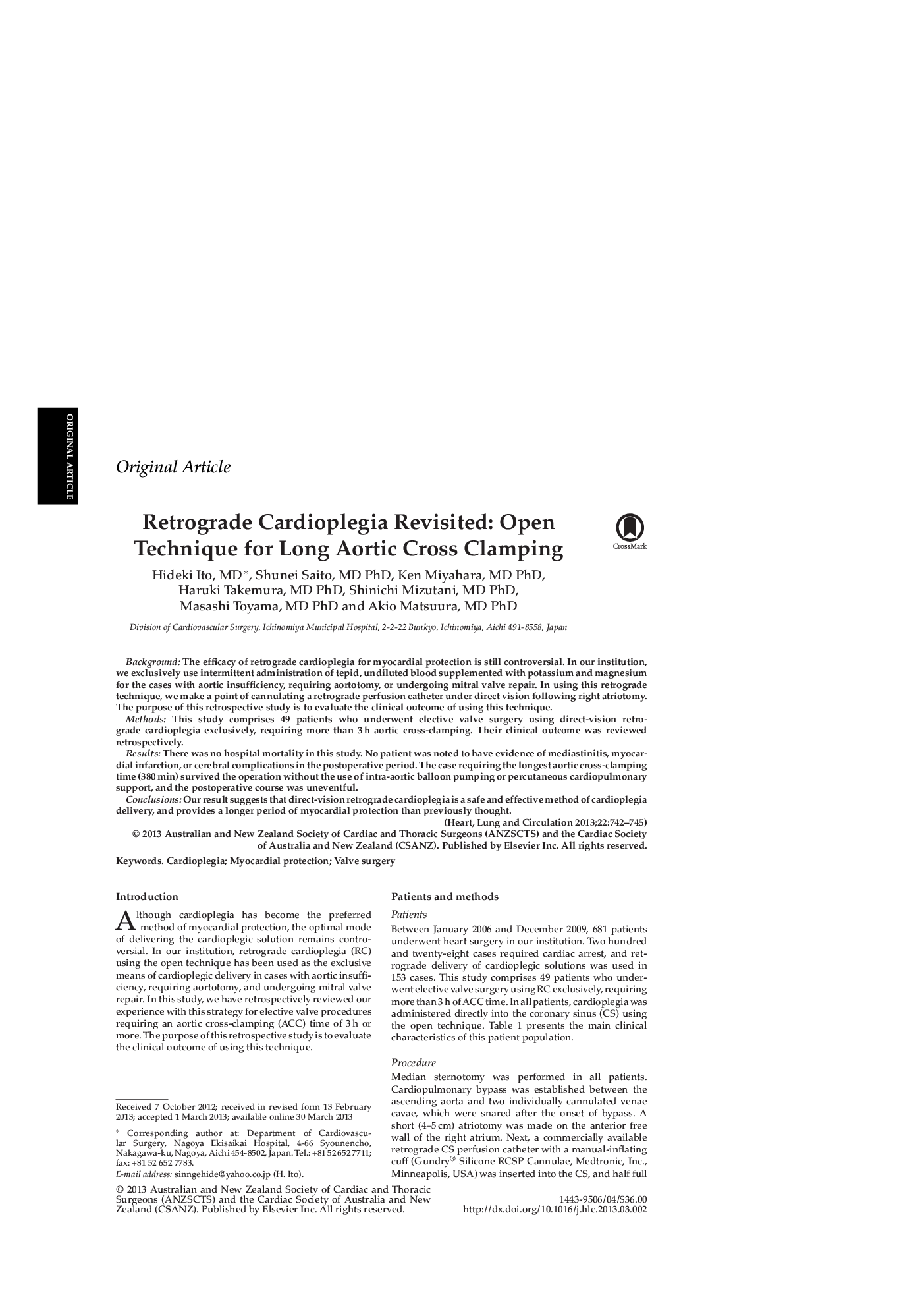| Article ID | Journal | Published Year | Pages | File Type |
|---|---|---|---|---|
| 2917945 | Heart, Lung and Circulation | 2013 | 4 Pages |
BackgroundThe efficacy of retrograde cardioplegia for myocardial protection is still controversial. In our institution, we exclusively use intermittent administration of tepid, undiluted blood supplemented with potassium and magnesium for the cases with aortic insufficiency, requiring aortotomy, or undergoing mitral valve repair. In using this retrograde technique, we make a point of cannulating a retrograde perfusion catheter under direct vision following right atriotomy. The purpose of this retrospective study is to evaluate the clinical outcome of using this technique.MethodsThis study comprises 49 patients who underwent elective valve surgery using direct-vision retrograde cardioplegia exclusively, requiring more than 3 h aortic cross-clamping. Their clinical outcome was reviewed retrospectively.ResultsThere was no hospital mortality in this study. No patient was noted to have evidence of mediastinitis, myocardial infarction, or cerebral complications in the postoperative period. The case requiring the longest aortic cross-clamping time (380 min) survived the operation without the use of intra-aortic balloon pumping or percutaneous cardiopulmonary support, and the postoperative course was uneventful.ConclusionsOur result suggests that direct-vision retrograde cardioplegia is a safe and effective method of cardioplegia delivery, and provides a longer period of myocardial protection than previously thought.
